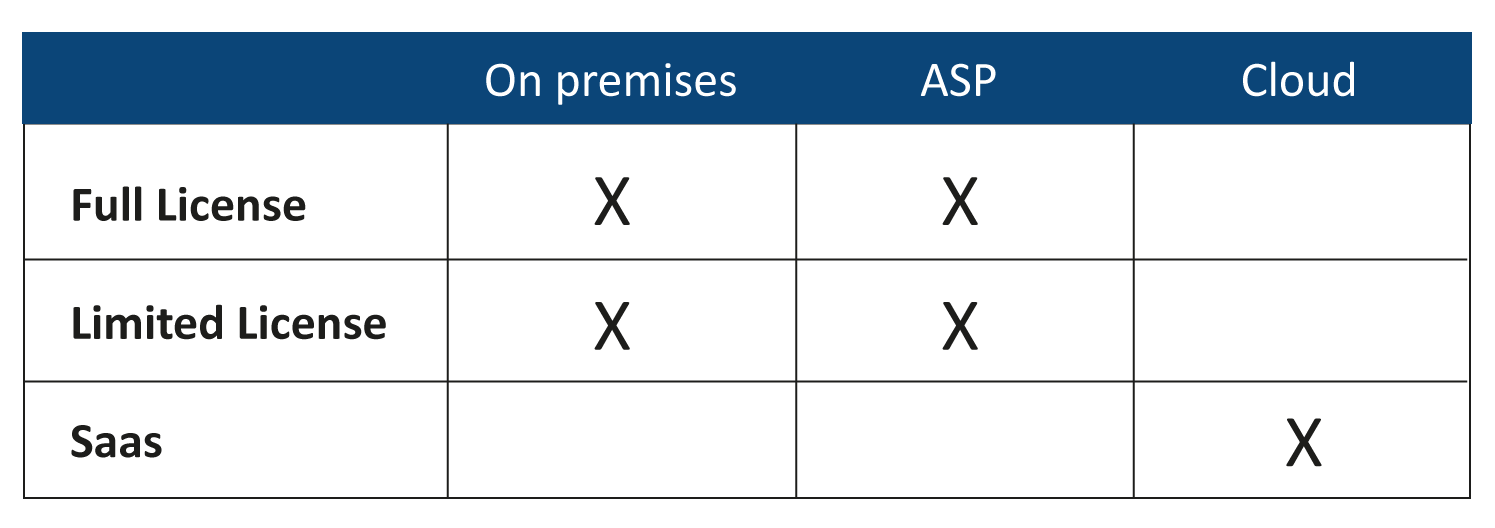Licensing
Distribution and Licensing
The complete system is currently organized into 18 functional modules for a total of around 80 different user profiles. For this reason, the "pay per use" formula is used to release Panoptikon, with the activation of the modules that the customer will use in the application.
All the licenses are annual (365 days from the time of activation) and include the subsequent releases that are developed according to the product road map shared with customers and made available for the upgrade (regulated by User Acceptance Test).
Panoptikon is supplied in 3 different modalities:
1. Full license: the licensed modules are issued without limitation to their use (multiple branches are supported with their specific catalogs). It is designed for corporate installations, there are no limitations on the number of users and modules can also be customized (through the development of add-ons owned by the customer). The AMS service (Assistance and Maintenance Service) is licensed separately based on the complexity of the installation and the number of users.
2. Limited license: the licensed modules are released with limitation to the activation of a single branch. Only a second language can be activated, the access limit is of 1000 users. It is primarily designed to be used by specific departments with particular needs and it includes the AMS service (Assistance and Maintenance Service).
3. SaaS (Software as a Service): at present it is available only for some specific services (DReCT team and PACE team assessment systems). It consists in activating the log-in information to the services of the central instance reachable on the domain app.exagogica.com. It is the solution for those who need a standard service and want to minimize license and system management costs.
The architecture of system-level services can, in turn, be of 3 types:
1. On premises: the installation takes place on the infrastructure made available by the customer. In these cases, the access occurs only within the company intranet. The basic system-level services are charged to the customer.
2. ASP (Application Service Provider): the installation takes place on a dedicated application server, made available by Exagogica (the DB server is centralized). Exagogica is responsible for the system administration. The access to the service takes place either without restrictions on the geographical network, or via VPN with a physical firewall with access limited to authorized users only.
3. Cloud: services are provided on the common instance managed in cloud computing. The data of the various customers are segregated only from a logical point of view and not a physical one.
The possible correspondences between the licensing methods and those of system architecture are highlighted in the following table:







